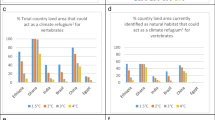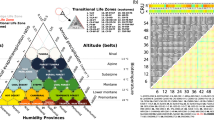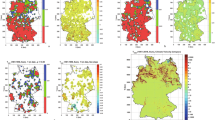Abstract
General circulation models (GCM) predict that increasing levels of atmospheric carbon dioxide (CO2) and other greenhouse gases will lead to dramatic changes in climate. It is known that the spatial variability of species richness over continental spatial scales is strongly correlated with contemporary climate. Assuming that this relationship between species richness and climate persists under conditions of increased CO2, what changes could we expect to occur in terms of species richness? To address this question, I used observed relationships between contemporary richness and climate, coupled with climate projections from five GCM, to project these future changes. These models predict that the richness of vertebrate ectotherms will increase over most of the conterminous United States. Mammal and bird richness are predicted to decrease in much of the southern US and to increase in cool, mountainous areas. Woody plant richness is likely to increase throughout the North and West and to decrease in the southwestern deserts. These projections represent changes that are likely to occur over long time scales (millennia); short-term changes are expected to be mainly negative.
Similar content being viewed by others
Author information
Authors and Affiliations
Additional information
Received 12 May 2000; accepted 20 December 2000.
Rights and permissions
About this article
Cite this article
Currie, D. Projected Effects of Climate Change on Patterns of Vertebrate and Tree Species Richness in the Conterminous United States. Ecosystems 4, 216–225 (2001). https://doi.org/10.1007/s10021-001-0005-4
Issue Date:
DOI: https://doi.org/10.1007/s10021-001-0005-4




